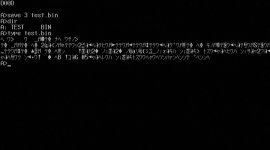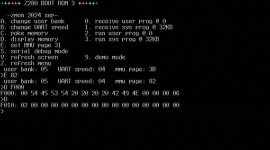So I've written (most of) a CBIOS, with the goal of bringing up CP/M on my Z280 board. I have it configured for 32 sectors per track, so that one track corresponds to a 4KB memory page. The plan is to load a disk image into RAM, and have the BIOS disk routines temporarily swap MMU pages to read/write 128-byte sectors in the disk image / ramdisk.
What I've read is that CCP, BDOS, and BIOS go into the first two tracks. I found a dump which appears to have a base address of $DC00, and I think patching in my BIOS, putting it in a disk image, and making a boot loader should be straightforward.
The rest of disk image I'm not sure about. I've seen some info on how directory entries are laid out, but I'm not sure if I have all the details to make a disk image from scratch. I'd want to compare it with an existing disk to check that things are correct, but I haven't seen any disk images in a raw format. They are in some other format and when I look at one in a hex editor it doesn't make a lot of sense. If I have CP/M in RAM and running, is it possible to initialize a blank disk from there? Would it be enough to have the image full of $E5 or something, and then use the SAVE command to start adding files? Or is there a different process for turning a blank disk into a CP/M disk?
What I've read is that CCP, BDOS, and BIOS go into the first two tracks. I found a dump which appears to have a base address of $DC00, and I think patching in my BIOS, putting it in a disk image, and making a boot loader should be straightforward.
The rest of disk image I'm not sure about. I've seen some info on how directory entries are laid out, but I'm not sure if I have all the details to make a disk image from scratch. I'd want to compare it with an existing disk to check that things are correct, but I haven't seen any disk images in a raw format. They are in some other format and when I look at one in a hex editor it doesn't make a lot of sense. If I have CP/M in RAM and running, is it possible to initialize a blank disk from there? Would it be enough to have the image full of $E5 or something, and then use the SAVE command to start adding files? Or is there a different process for turning a blank disk into a CP/M disk?


